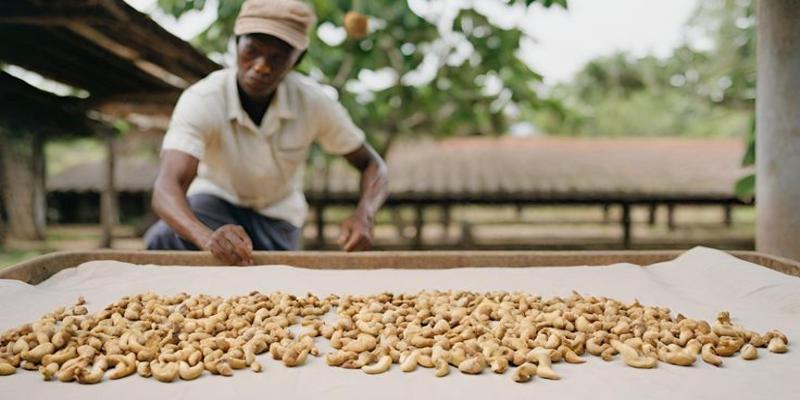Harvest Strategy - Overview, Reason, Examples
Nov 14, 2024 By Verna Wesley
As a farmer, you understand that harvest is one of the most critical times financially for the operation. Some thoughtful planning and strategy regarding your harvest cash flow can mean the difference between a profitable year and financial strain. This article provides critical steps on how one can manage his harvest income effectively, from forecasting expected yields to timing grain sales and managing expenses.
How to Understand Your Farm's Cash Flow Needs During Harvest
 Evaluate Your Financial Landscape
Evaluate Your Financial Landscape
Understanding your farm's cash flow requirements during harvest is critical to maintaining financial stability and maximizing profitability. Based on your current financial situation, consider outstanding debts, operating expenses, and anticipated income. This kind of analysis will paint a definite picture of your farm's current financial status and pinpoint potential cash-flow gaps during the heavy harvesting period.
Anticipate Harvest-Specific Expenses
As the harvest season approaches, cash flow meets its closest approximation to a reality check in the form of extraordinary expenses associated with the period. Some of these costs include:
- Equipment servicing and repairs
- Fuel/energy consumption
- Temporary labor
- Storage and transport
Post-harvest processing
The ability to plan for such costs will adequately equip your budget for the expected stresses this critical period will impose on your finances.
- Timing Your Cash Inflows and Outflows
- Balance your cash inflows and cash outflows to maintain a healthy liquidity position through harvest.
- Project your crop sales income and any government payments and insurance claims.
- Set that figure against your likely expenses, identifying where a shortfall may occur.
- Negotiate extended terms of payment with suppliers or explore avenues for short-term finance to plug the gap, if needed.
Harvest Budget Development Based on Past Data and Projections
Start with historical harvest records: yield, market price, and operating costs. These histories are a great foundation to build budget projections off of because of the trends and cycles represented. Pay specific attention to:
- Variety specific field by field crop yields
- Price volatility throughout the harvest period
- Labor costs
- Equipment costs
- Storage costs
- Transportation costs
Long-Term Projection
Base your projected outcome on your historic analysis. Consider the following factors that may impact your next year harvest: such as:
- Long term weather forecast and potential yield impact
- Market conditions and forward prices for your commodities
- Changes in input costs: fuel, fertilizer, labor, etc
- Equipment purchases/upgrades and changes to your operation
Create a Flexible Budget
Develop a detailed budget for all aspects of your harvest operation. Consider the following line items:
- Projected income from expected yields and prices
- Variable costs: labor, fuel, equipment maintenance
- Fixed costs: insurance, property taxes, loan payments
- Contingency fund in case of unexpected expenses Keep your budget dynamic to account for shifts in market conditions or weather.
Go back and adjust your estimates regularly during the growing season, as you'll have more information to base your decisions on.
How to Set Money Aside and Manage Cash Reserves During the Season
 Building a Financial Buffer
Building a Financial Buffer
Creating a solid financial buffer is necessary to combat the uncertainties of agricultural operations. First, save a portion of your income in relatively profitable years. Try to build up enough reserves that would cover three to six months of operating expenses. This would cushion any unexpected setback in the form of equipment failure or unfavorable weather without allowing these events to affect severe financial health on the farm.
Operating a Cash Flow Management System
Establish an ongoing cash flow management system for the current growing season to trace anticipated income and expenses. Utilize agricultural accounting software or spreadsheets to monitor your current financial position. It is essential to revise projections regularly based on market conditions, your estimate of yields, and any input cost adjustments. Because this is a proactive strategy, you can determine well in advance of critical times whether cash flow gaps are likely to occur or how much time you have to take remedial action.
Consider Flexible Financing
You may want to consider supplementing your cash on hand in leaner times with flexible financing options. This might include lines of credit, operating loans, or government-backed programs specifically designed for agriculture. Financial tools can provide the necessary liquidity needed to meet short-term expenses without going through your emergency funds entirely. However, these tools should not be used in excess, being mindful of how they are going to be repaid so as not to overextend the financial resources of your farming operation.
Expense Budgeting and Timing of Purchases
Time large purchases to control cash outflows so that cash flow is maximized during the season. Likewise, take advantage of early payment discounts on inputs whenever possible, balancing this with a strategic buildup of cash reserves. Consider negotiating longer terms of payment with suppliers during intense cash flow periods.
Strategies to Improve Cash Flow Management in Harvesting
Practice Good Forecasting
The success of cash flow management during harvest is pegged on good forecasting. You can utilize historical data, the current market trend, and the expected yield to arrive at comprehensive financial forecasts. By this, you will be able to predict the cash requirements and shortfalls in cash flow accurately, and as such, you will be ready to make proactive decisions. You can look out for special agricultural forecasting software that will not only assist you in enhancing the accuracy of the forecast but also help you reduce the time and effort required to develop the forecast.
Diversifying Streams of Income
Being dependent on harvest income makes you vulnerable to market fluctuations and unpredictable crop failures. Diversify your streams of revenue. This will include value-added products, agritourism initiatives, and varieties of off-season crops. In this way, by diversifying your streams of revenues, you will be developing a solid financial foundation with reduced risks associated with one harvest cycle.
Optimize Inventory Management
Efficient inventory management is cardinal to ensuring that cash flow remains healthy. Consider a just-in-time inventory system whereby goods are ordered and stored only to the extent required for immediate sale. This can be combined with technology, such as RFID tracking and inventory management software, to maintain real-time visibility of your stock levels and avoid overstock positions that tie up valuable capital and make sure you have an on-hand supply.
Negotiate Favorable Payment Terms
Negotiate win-win payment terms with suppliers and buyers. Bargain with your supplier for an extended payment period, which would match your projected cash inflows. Correspondingly, ask the buyers for earlier payments or offer small discounts for prompt payment. This would smoothen out cash inflow Shard gaps and ensure, to a more significant extent, a trouble-free financial operation of the harvest season.
Conclusion
In other words, planning for the cash flow of a harvest and setting an overall strategy are essential steps toward agricultural success. By assiduously ensuring that this planning is executed and follows through with a well-implemented strategy, the potential will exist to maximize the profits arising from the harvest and position the farm for financial stability over the long term, along with its growth.








